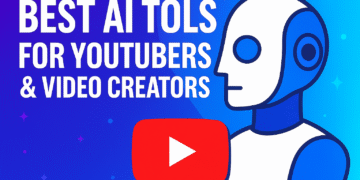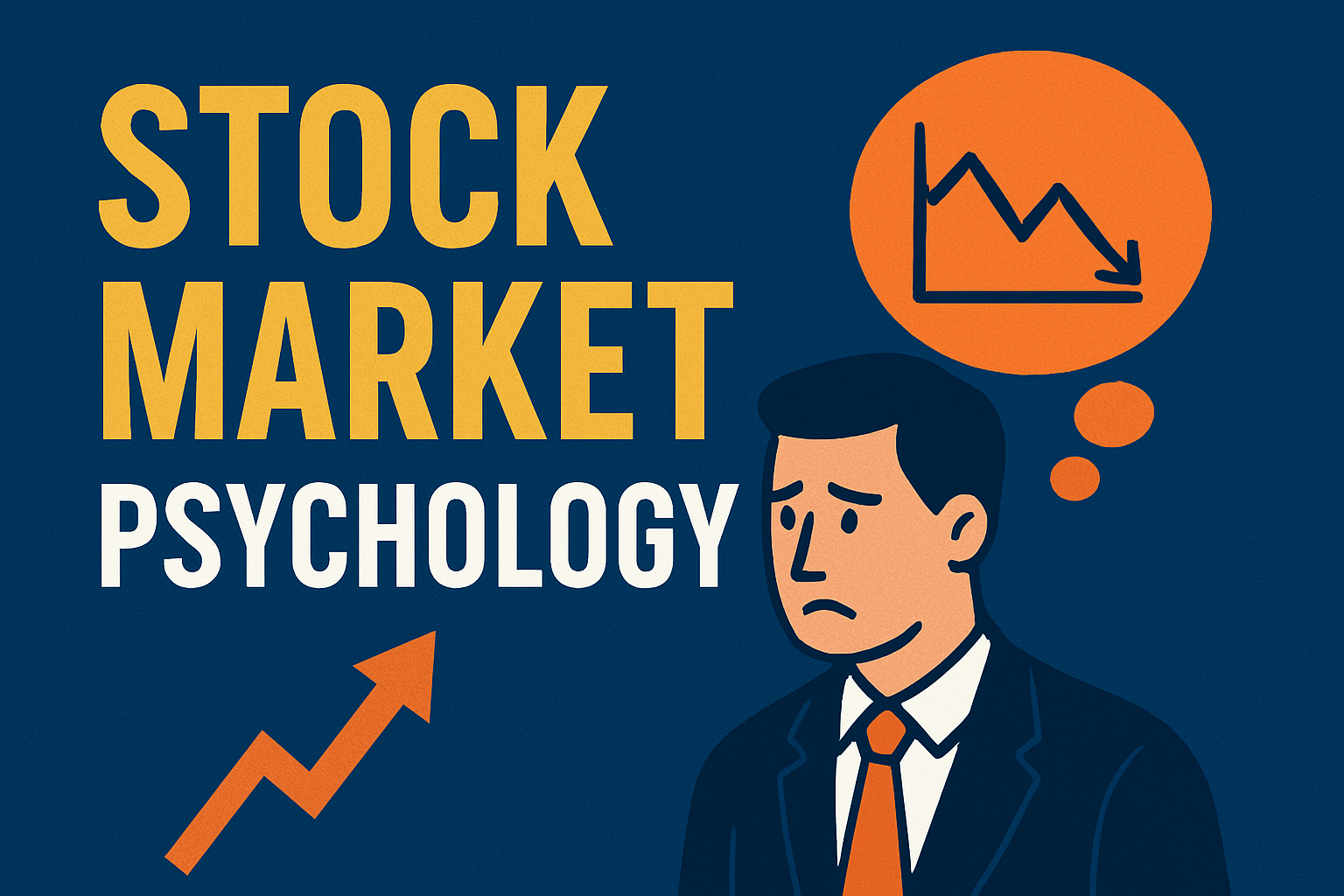
Feeling stuck creating content that truly stands out? In 2025, AI tools are changing the game for writers, marketers, and creators alike. This post will show you how artificial intelligence is simplifying tasks like SEO, personalization, and video creation.
Keep reading to see what’s next for content in this tech-driven age!
Key Takeaways
- AI tools like Jasper and Canvas create human-like content quickly, adjusting tone for platforms like LinkedIn or Twitter. Human edits ensure the brand voice remains relatable.
- Personalized content powered by machine learning enhances engagement, as demonstrated by Netflix’s recommendations or dynamic emails customized to user behavior.
- Platforms like Adobe Sensei automate visual and video creation in minutes, saving time while boosting marketing campaigns’ impact.
- SEO strategies are advancing with AI identifying keywords faster and preparing for voice search trends using tools like MarketMuse.
- Generative AI enables creators to produce multimodal content—text, images, videos—and adapt it across languages effortlessly for global audiences.
AI-Generated Content with Human-Like Quality
 AI tools like Jasper and Canvas can now mimic human tone almost perfectly. They rapidly create blog posts, social media captions, or email drafts in minutes. These tools analyze user behavior and customer preferences to adjust writing style.
AI tools like Jasper and Canvas can now mimic human tone almost perfectly. They rapidly create blog posts, social media captions, or email drafts in minutes. These tools analyze user behavior and customer preferences to adjust writing style.
For instance, an AI might adapt its tone for LinkedIn professionals while keeping content casual for Twitter.
While AI speeds up production, it often creates generic outputs without a personal touch. Human edits remain vital to keep the brand voice alive and relatable. Tools also help streamline research by mining trending topics or featured snippets from search engines.
This fine-tuned approach saves time but keeps content engaging for readers across platforms like Instagram or blogs.
Personalized Content Creation for Enhanced User Engagement
AI now surpasses simply creating content that mimics human interaction. It uses machine learning to customize messages for individuals, increasing user engagement. Platforms like Netflix and Amazon provide excellent examples.
Their recommendation engines suggest shows or products based on browsing history, purchases, and other data points. This same method helps marketers create highly personalized campaigns.
For instance, individualized emails or dynamic website pages can align with a user’s interests or behavior in real time.
Machine learning models analyze vast customer data to predict preferences more quickly over time. E-commerce stores use these tools to recommend items matching seasonal trends or past choices, optimizing ad budgets by targeting the right audience directly.
Social media platforms also take advantage of AI-driven personalization for targeted ads and strategies focused on specific audiences’ needs. These initiatives improve conversion rates and strengthen customer loyalty through better, individualized experiences.
Automated Video and Visual Content Production
AI speeds up video creation. It can generate entire scripts, design layouts, and even animations in minutes. Platforms like Adobe Sensei help content creators save hours by automating editing tasks.
They also develop visual elements that fit perfectly into marketing campaigns or social media strategies.
Brands now rely on AI tools to pick the best visuals for their audience. These tools analyze user behavior and predict what will grab attention. Social media managers use this data for hyper-targeted campaigns, boosting engagement rates and click-throughs without extra effort.
AI-Powered SEO and Content Optimization
AI transforms SEO by analyzing keywords and search trends faster than humans. Tools like Jasper pinpoint high-potential keywords, saving hours of research. MarketMuse aligns content with user intent, boosting visibility in Google searches.
These tools predict rankings and suggest edits based on competitor data.
Voice search is reshaping strategies too. AI detects long-tail keywords for voice commands, helping websites appear in smart speaker results. SEO pros must now master AI tools and sharpen their data analysis skills instead of just relying on soft skills alone—all to stay competitive in 2025’s digital marketing game.
AI-Driven Voice and Conversational Content
Voice search is reshaping content strategies. With tools like Alexa, Siri, and Google Assistant growing in popularity, brands must adapt. AI now helps create voice-friendly content that matches how people speak naturally.
For example, businesses use AI to adjust blog posts into concise answers for spoken queries. This boosts visibility in voice search results and improves customer engagement by aligning with user behavior trends.
Conversational AI transforms customer experiences too. Chatbots powered by systems like OpenAI’s GPT handle complex questions day or night without missing a beat. On social media platforms, these bots assist users through product catalogs and answer FAQs instantly.
They recommend products based on consumer preferences using data analytics and recommendation algorithms. These features save time and support highly customized marketing campaigns with smooth interaction across platforms like apps or websites!
Generative AI for Multimodal Content Creation
Generative AI creates text, images, and videos faster than ever. Tools like Agentic AI, launched in 2025, can even decide how to present content without human help. Imagine crafting a marketing campaign with matching captions, graphics, and videos in minutes instead of hours.
This technology boosts productivity and lets creators focus on strategy.
It doesn’t stop there. Generative AI supports translation and localization for global audiences. A single piece of content can quickly adapt to different languages while keeping its message intact.
Brands use this flexibility to keep their voice consistent across markets. Adobe Sensei is one example helping marketers fine-tune visuals for targeted campaigns on social media platforms worldwide.
AI for Content Repurposing and Cross-Platform Distribution
AI tools make content repurposing fast and smart. Platforms like Jasper rework blog posts into videos or infographics for Instagram, TikTok, or Pinterest. AI can transform old webinars into short clips perfect for social media marketers.
This keeps your audience hooked without creating from scratch every time.
These tools also analyze engagement on each platform. They suggest the best formats to boost click-through rates or user behavior insights. Automation handles scheduling, curation, and even translating posts for global audiences.
Marketing campaigns stay fresh and consistent across all digital channels.
Predictive analytics takes this process a step further, shaping strategies in real-time insights.
Predictive Analytics for Trend-Based Content Strategy
Predictive analytics takes content planning to the next level. It examines past data, like customer behavior and historical trends, to predict future patterns. Imagine knowing what topics will gain traction before anyone else does! AI tools analyze social media activity, purchase history, and browsing habits.
This creates detailed audience profiles that highlight interests and pain points. Businesses use this information to create targeted marketing campaigns or blog posts that hit home with readers.
Timing also matters in content strategy. Predictive models suggest the best times to publish on platforms for maximum engagement. For instance, AI might notice that your audience clicks more on visual content during weekends but prefers reading long-form articles midweek.
Adobe Sensei or OpenAI’s GPT can even recommend formats based on user behavior analysis from previous months’ performance. With these insights at hand, companies can take proactive steps instead of just reacting to market changes later down the line.
Ethical Challenges in AI Content Development
AI content creation raises big questions about fairness, trust, and responsible use—read on to explore these challenges.
Addressing Bias in AI-Generated Content
AI tools sometimes rely on flawed data. This can lead to biases in the content they create. For example, a sentiment analysis tool analyzing brand opinions might favor one group unfairly because of biased training data.
These mistakes flow into marketing strategies, customer engagement tactics, or even ad campaigns without proper checks. Regular audits of AI systems help find and fix these issues early.
Human oversight plays a key role here. People must monitor AI outputs for fairness and accuracy constantly. Without this step, generative AI might unintentionally spread stereotypes or outdated views across social media platforms or SEO content pieces.
Companies using predictive analytics should use diverse datasets to minimize risk while improving customization for audiences worldwide.
Ensuring Responsible Use of AI Tools
Bias in content is dangerous, but misuse of AI makes it worse. Clear rules and ethical practices must guide the use of AI tools. Companies need to follow privacy laws like GDPR and CCPA to protect user data.
These regulations hold businesses accountable for their actions. For example, brands can’t collect personal information without consent or sell it carelessly. Sticking to these standards safeguards consumer trust while avoiding hefty fines.
Transparency about AI usage builds loyalty with users. People want honesty about how companies create content or target ads using artificial intelligence. HubSpot and Adobe Sensei are examples of tools gaining attention by focusing on responsible practices in marketing campaigns and content generation.
A mix of human insight with AI-driven strategies ensures smarter, user-friendly solutions that respect boundaries without sacrificing creativity or efficiency.
Future of Human-AI Collaboration in Content Creation
AI will act as a partner, not a replacement, for human creators. Machines can handle data-heavy tasks like predictive analytics and market research. Humans will stay in charge of storytelling, emotional intelligence, and creative strategies.
Together, they’ll produce hyper-personalized content that resonates with diverse audiences.
Human oversight remains vital to keeping brand voice intact. AI tools like Adobe Sensei may automate SEO optimization or suggest ideas but cannot decide tone or message alignment on their own.
This balance allows brands to mix speed with authenticity while building trust in marketing campaigns.
AI’s Role in Shaping Marketing and Consumer Experiences
AI transforms marketing campaigns with precision and speed. Programmatic advertising platforms, powered by AI, automate ad placement bidding. This increases return on investment while saving time for marketers.
Mastercard uses generative AI to improve user engagement and detect fraud, showing how businesses can benefit from smarter tools.
AI chatbots enhance customer relationship management by analyzing behavior in real-time. These tools offer personalized product suggestions and 24/7 support to boost customer engagement.
Automated workflows streamline repetitive tasks like content optimization or keyword research, allowing teams to focus on creative strategies instead of mundane processes.
Free vs. Paid AI Tools for Content Creators in 2025: Which Should You Choose?
Free versus paid AI tools is the million-dollar debate among content creators in 2025. Here’s a comparison laid out side by side to help you determine what aligns best with your needs.
| Aspect | Free AI Tools | Paid AI Tools |
|---|---|---|
| Cost | Zero upfront investment, great for beginners or those on tight budgets. | Subscription-based pricing ranging from $30 to $200 per month depending on features. |
| Key Features | Basic content generation, simple grammatic corrections, and keyword suggestions. | Advanced SEO analytics, audience insights, and personalization options (like what MarketMuse and Jasper offer). |
| Scalability | Limited functionality, often struggles with high-volume tasks. | Handles large-scale projects seamlessly, with features for bulk editing and publishing. |
| Learning Curve | Beginner-friendly with pre-set templates and straightforward interfaces. | Can be overwhelming initially, but provides diverse customization for seasoned users. |
| Technical Insights | Minimal optimization tools, barely scratches the surface of SEO needs. | Offers competitor analysis, real-time optimization, and predictive content insights. |
| Examples | Tools like Canva (free tier) and Copy.ai offer decent performance for basic projects. | Platforms like Jasper and MarketMuse dominate advanced content creation. |
| Customization | Limited. Can handle generic templates but lacks depth for niche content. | High-level personalization for targeted audiences, boosting engagement. |
| User Base | Ideal for solo creators, bloggers, or startups with fewer resources. | Preferred by agencies, large companies, and professional marketers. |
| Support | Limited to community forums or basic FAQs, response times can be slow. | Dedicated support teams with faster resolutions and specific advice for users. |
| Competitive Edge | Good for simple, early-stage content strategies but lacks innovation. | Critical for staying ahead in competitive markets by leveraging data-driven approaches. |
Choosing between them depends on your goals and budget. Both have their place, but the edge often leans towards paid tools for serious creators striving for growth.
Conclusion
AI is reshaping content creation like never before. It crafts smarter, faster, and more personal content for every audience. From videos to blogs, AI tools make creativity limitless.
Businesses now connect better by predicting trends and needs with precision. The future of human-AI teamwork in storytelling looks bright and exciting!
For a deeper dive into making the right choice between free and paid AI tools for your content creation needs in 2025, click here to read our comprehensive guide.
FAQs
1. How is AI transforming content creation in 2025?
AI is changing how we create content by using predictive analytics and generative AI to produce personalized and optimized material for target audiences. It helps businesses improve customer engagement through hyper-targeted campaigns, interactive stories, and social media strategies.
2. What role does AI play in creating personalized content?
AI tools analyze user behavior, customer journeys, and preferences to deliver hyper-personalized content like targeted advertisements or blog posts that resonate with specific audiences.
3. Can AI-generated content improve search engine optimization (SEO)?
Yes, artificial intelligence enhances SEO by optimizing keywords, analyzing trends, and improving the relevance of marketing campaigns for better click-through rates.
4. Are there ethical concerns with using AI in content creation?
Ethical considerations in AI include addressing issues like bias in algorithms, ensuring emotional intelligence when simulating human-like interactions, and maintaining transparency about its use in business functions or education sectors.
5. How can businesses gain a competitive advantage with AI technology?
Businesses can leverage advanced tools like Adobe Sensei to create visual content faster while refining their social media monitoring efforts to stay ahead of competitors.
6. Will humans still have a role alongside AI in 2025?
Absolutely! Human-AI collaboration remains key for crafting creative ideas, managing ethical use of AI technologies, and injecting emotional depth into marketing strategies where machines fall short.



![AI Tools for Social Media Creators: Instagram, TikTok & LinkedIn [2025]](https://niftynautanki.com/wp-content/uploads/2025/09/AI-009-360x180.png)


![AI Writing Tools Compared: ChatGPT vs Jasper vs Writesonic [2025]](https://niftynautanki.com/wp-content/uploads/2025/09/img-00998-360x180.png)




Comments 2